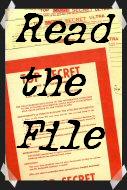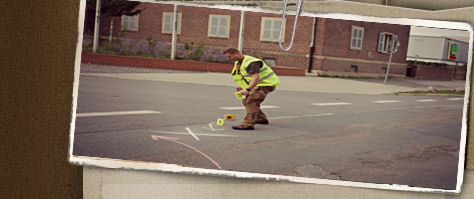|
On May 4th 2007, on the day The
Netherlands commemorate the people
who died in World War Two, the
report of what is called the "Last
Investigation of War Crimes
committed in World War Two in The
Netherlands" was presented to the
Mayor of the Municipality of West
Maas en Waal.
The report describes the findings
of an investigation by the
Netherlands National Crime Squad ("Dienst Nationale
Recherche") to the summary
execution of 14 civilians in the
town of Wamel by members of the
German Luftwaffe (Air Force) on
September 20th,1944.
The investigating detectives
provided Battledetective.com with a
copy of the official report of this
investigation, just hours before the
official presentation. We were under
orders not to disclose the report
until after May 4th 2007!
Here is the
report!

The report is in
the Dutch language. Click here for a
summary in
English.
To Battledetective.com,
the
investigative detectives Mosk and
Waterman are true battle detectives
to the letter!
Battle Detective's Standard of
Investigative Quality
It is our purpose to find the truth,
or to get as close to it as
possible. Our case files are
prepared as if to be presented in a
criminal court. Therefore we set a
high standard for the quality of our
investigations and the effort we put
in them to seek the truth and also
to validate our discoveries.
An
example of the latter can be found
in our
Battle Relic #10- file. In this
case we put our own discovery on
trial and conducted a false positive
validation test.
BattleDetective.com is impressed by
the research done by members of the
Netherlands Institute for War
Documentation (the acronym in Dutch
is NIOD). In their 2003
investigation, researchers David
Barouw and Gerrold van der Stroom
intended to identify the person who
betrayed the Amsterdam Anne Frank.
This is the
investigation
in its English version!

Although conducted by civilian
investigators, the research is of a
quality level that
Battledetective.com seeks to
maintain. Although the traitor was
not identified, this is how Barouw
and Van der Stroom, concluded their
report:
"Our
investigation has not led us to the
culprit. Is this the final verdict
of the NIOD
on the betrayal of Prinsengracht
263? No. In theory, it would be
possible to carry out an
investigation on a larger scale than
ours, but we do not believe that
that would necessarily lead to a
better result.
[…]
Unfortunately, we are bound to
abide by what we concluded in 1986:
‘It will be impossible to
reconstruct the actual events’.
Of course that is regrettable,
because we would naturally have
liked to unmask the culprit(s) in
order to complete this part of the
Anne Frank story. That is not what
has happened. The possibility cannot
be ruled out that new betrayal
hypotheses will be advanced in the
future. We shall have to wait and
see whether these hypotheses will be
based on source material."
This not only illustrates the
limitations of criminal
investigation, but also the
professional pride of a good
(battle) detective.
In 2016, the Anne Frank House
published another theory on the
arrest. After a two-year study, they
suggested that the arrest may also
have been a coincidence, as the
raiding party could have been
looking for something else and
stumbled upon the people in the
annex by accident.
Started in August 2017, retired
FBI agent Vince Pankoke and a team
of experts try to find the truth
about the arrest of Anne Frank and
the others utilizing cold case
investigative techniques that have
only been developed in the past
decade. On August 4, 2019, exactly
75 years after the arrest of Anne
Frank, Vince Pankoke wants to finish
his diary in which he describes his
discoveries of new sources, facts
and conclusions about this ultimate
cold case.
Investigative and Reporting
Standard
Since January 1st, 2008,
Battledetective.com conducts
its
investigations and prepares its
reports of case files
in accordance with
Chapter 14 of War Department
FM 19-20, dated April 1945
Caution!
Do not mistake battle detectives
with a job description written in a
slightly different way. Although
one of the friendly merchants on our
links page sometimes nicknames
us "bottle detectives", that term
describes a completely different
line of work.
This 1931 Modern Mechanix Magazine
article explains:


|













